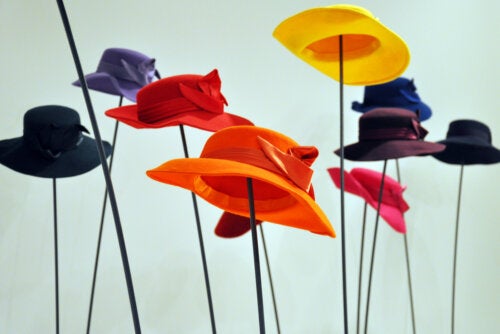6 Thinking Hats: A Dynamic to Foster Creativity

Adolescence is a complex stage in which children open up to the world. Environmental demands are increasing and they have more and more autonomy, which they may not always know how to handle. Young people begin to make their own decisions and expand their circle of relationships. Therefore, having the tools to navigate these new situations can be of great help. One of them is the 6 thinking hats dynamic.
With this exercise, we help young people to improve their thinking process and we teach them to make decisions and work as a team. These aren’t simple actions. They require knowing how to organize one’s own ideas, broaden one’s perspective, weigh different options, and consider the opinions of others. Fortunately, these processes can be worked on in a fun and practical way with techniques such as the one presented below.
6 thinking hats: What does this dynamic consist of?
When we think about any issue, and especially if we have to make a decision about it, there are several elements to take into account. For example, logic may dictate one thing and intuition another. On the one hand, we’re excited about positive possibilities, and, on the other, we’re terrified of unfavorable outcomes.
Faced with all this jumble of thoughts, taking action becomes complicated, especially because we often fail to identify what’s going on in our minds. Therefore, adolescents may feel confused and indecisive because they don’t know what to do or how to organize their ideas. When it comes to teamwork and joint decision-making, things get complicated because everyone has their own opinions.
To facilitate this process, the 6 Thinking Hats dynamic breaks down the procedure and sequences it. This helps young people to make room for all these possibilities. In addition, it not only helps at the time it’s applied but also trains the brain to learn to think in an efficient and deliberate way.

A technique to apply with adolescents
This method was proposed by the Maltese psychologist, Edward de Bono, who worked extensively in the area of creativity and lateral thinking. The 6 thinking hats dynamic is one of his most famous contributions and can be used in school settings to improve students’ communication and reasoning skills. Although the dynamic can be applied with children, it’s more effective with adolescents.
According to the contributions of Swiss psychologist Jean Piaget, from the age of 12, children enter the stage of formal operations. This implies that they’re more capable of handling abstract concepts and solving problems by considering different variables. Therefore, this tool can favor the cognitive processes of this stage.
How to put into practice the technique of the 6 thinking hats?
Now, how do we put into practice the 6 thinking hats approach? The premise is that each hat is a different color and represents a course of thought, an approach, or an aspect to be considered in decision-making:
- White: Represents objectivity and a neutral, fact-based opinion.
- Red: Symbolizes the expression of emotions, subjectivity, passion, or intuition.
- Yellow: Encompasses the optimistic approach and emphasizes the positive aspects, the advantages, and everything that can go well.
- Black: Contrary to the previous one, it highlights the most critical and negative aspects. It sees the dangers and what can go wrong.
- Green: This is the hat of creativity, originality, and lateral and divergent thinking.
- Blue: The blue hat directs and brings order to the rest. It represents structured thinking, guides each step of the dynamic, and chooses the final decision.

How to work with students
With this in mind, the students are divided into six groups. Each of them will be given a hat and will have to address a theme. Then, they must offer opinions and proposals in relation to what their hat symbolizes. For example, those wearing the white hat will have to provide concrete data, without positioning themselves subjectively. On the other hand, the red team will have to elaborate arguments based on illusion or fantasy.
It’s also possible to divide the classroom into different groups of six people. In this case, in each group and individually, each student will be in charge of one of the hats and its associated rules. In addition, a wide range of topics can be discussed, from current news to moral dilemmas.
Take advantage of the benefits!
In any case, the 6 Thinking Hats method enhances dialogue and discussion skills, empathy, creativity, and problem-solving. Teenagers learn to adopt different perspectives and to consider various approaches, thus generating a more complete, organized, and tolerant opinion. In addition, it allows for original proposals and solutions, while encouraging participation and group cohesion.
All cited sources were thoroughly reviewed by our team to ensure their quality, reliability, currency, and validity. The bibliography of this article was considered reliable and of academic or scientific accuracy.
- Arboccó de los Heros, M. (2018). Aportes de Jean Piaget a la teoría del conocimiento infantil. Temática Psicológica, 6(6), 15-19. https://doi.org/10.33539/tematpsicol.2010.n6.857
- De Bono, E., & Diéguez, R. D. (1988). Seis sombreros para pensar. Granica.
